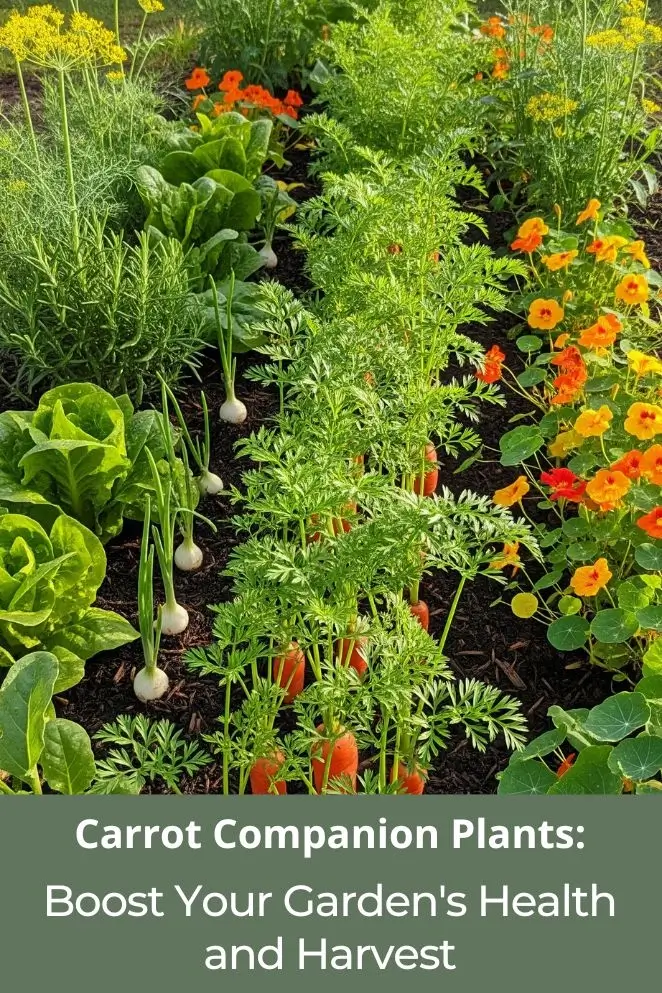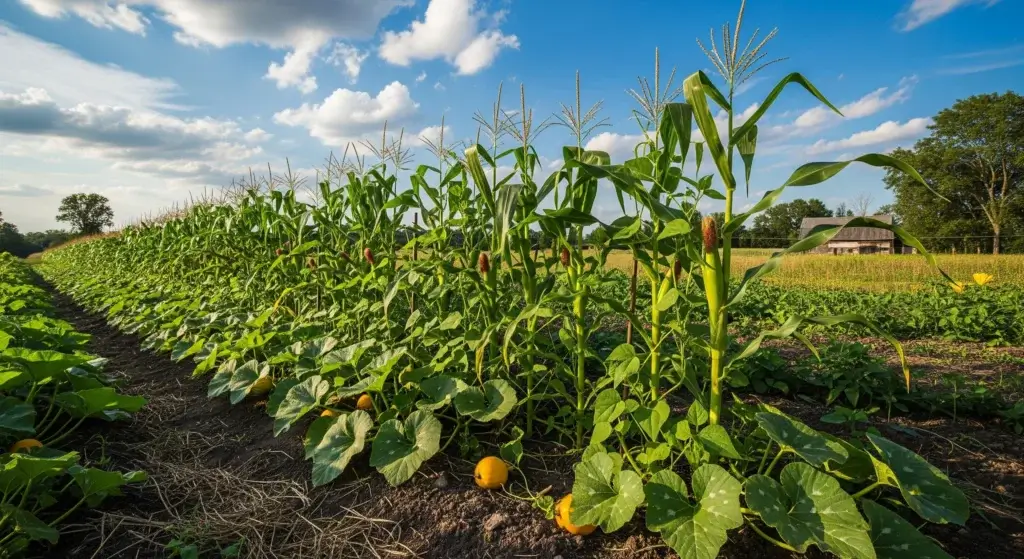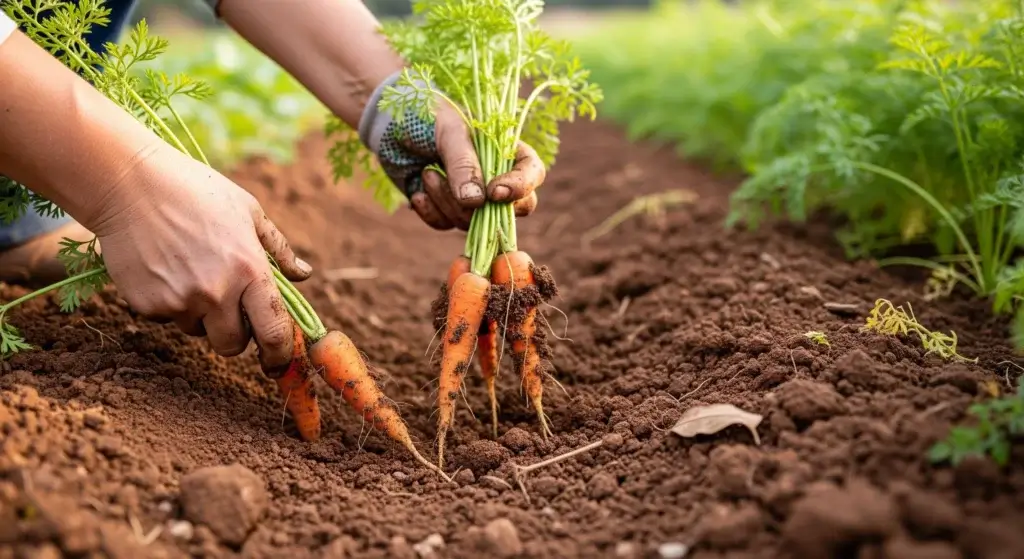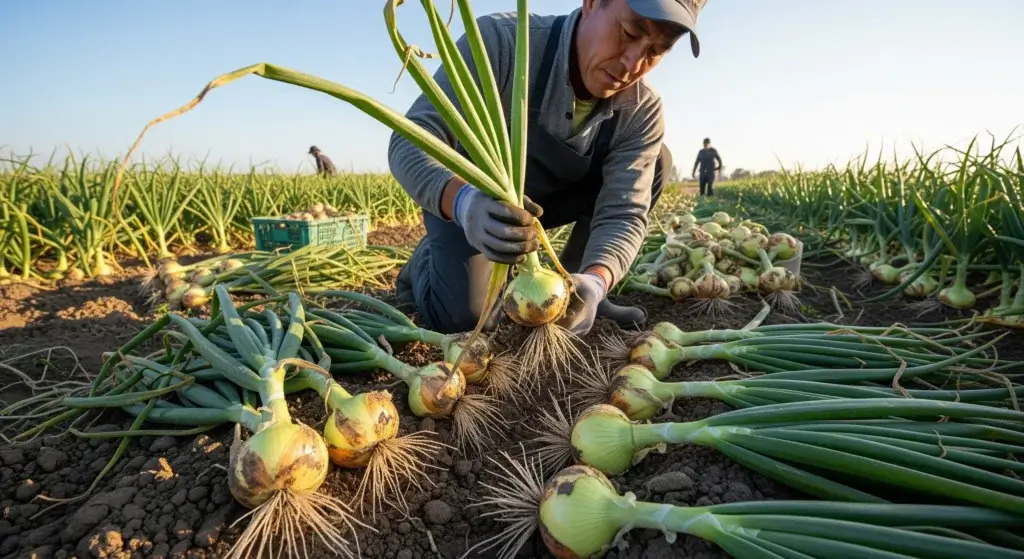
Growing carrots isn’t just about dirt and water—it’s about teamwork in the garden.
Carrots do best when planted with the right buddies, and that’s where companion planting comes in.
I once tucked carrots next to onions and noticed fewer pests messing with them—it’s like giving your veggies a built-in security squad.
Plant smart, and your carrots will grow stronger, tastier, and way less stressed.
What Makes Companion Planting with Carrots So Effective?
Companion planting is nature’s hack for healthier gardens—plants helping each other out.
Carrots are perfect for this because they grow underground while their buddies take up space above, so no one’s fighting over resources.
Plus, carrots have a long growing season and annoying pests that friends can help keep in check.
Science even backs this up: marigolds planted with kale can slash aphid problems by attracting “good bugs” that hunt the bad ones.
Gardeners have known this trick forever, but now research proves it—teamwork really does make the dream work.
Top 12 Best Companion Plants for Carrots
1. Tomatoes
Tomatoes and carrots are basically kitchen BFFs.
Carrots do their thing underground while tomatoes hustle above, so no fighting for space.
Tomatoes also give light shade in scorching weather so your carrots don’t dry out like sad little sticks.
Pro tip: space tomato plants about 18 inches apart and sow carrot seeds in the gaps — carrots get enough sun but still chill under the tomato canopy.
2. Onions and Garlic
Onions and garlic are like smelly bodyguards for carrots.
Their sulfur-y scent confuses pests (looking at you, carrot fly) and keeps them away.
Carrots return the favor by loosening the soil so onion bulbs can grow happy. It’s a low-drama, high-reward friendship.
3. Herbs
Strong-smelling herbs are carrot wing-people. They mask carrot scent, confuse pests, and attract helpful insects.
Examples that actually work:
- Dill — invites parasitic wasps that clean up carrot pests.
- Oregano — smells strong and repels a bunch of bad guys.
- Thyme — full of essential oils that insects hate.
- Cilantro — brings in beneficial bugs while scaring off pests.
- Chives — act like mini-onions, easy to harvest.
4. Lettuce and Leafy Greens
Fast-growing lettuces are ideal roommates for carrots because you harvest them early, leaving carrots to bulk up.
Lettuce, spinach, and other shallow-rooted greens don’t mess with carrot taproots and they suppress weeds while carrots are still babies.
It’s like having a cover crop that doubles as lunch.
5. Peas
Peas are the garden’s natural fertilizer factory.
They fix nitrogen from the air into the soil, which gives carrots a nutrient boost.
Since peas climb, they don’t steal ground space either — efficient and generous, honestly.
6. Marigolds
Marigolds (especially French marigolds) are like tiny, colorful bodyguards — they repel nematodes and lure good insects.
Plants like borage, oregano, and cilantro also pull double duty: they look nice and help keep pests in check.
Toss some marigolds into your carrot beds and you get vibes and protection.
7. Nasturtiums
Nasturtiums are like decoys in your garden—they lure pests like aphids and cucumber beetles away from your carrots.
Bonus: their flowers and leaves are edible, with a peppery kick that makes salads way more interesting.
8. Radishes
Radishes are the speed-runners of the veggie world.
They grow fast, break up tough soil, and are ready to harvest just as carrots start bulking up.
Plant them together and you’re basically tag-teaming the soil for max productivity.
9. Leeks
Leeks and carrots grow at the same chill pace, making them perfect long-haul companions.
Like their onion cousins, leeks scare off carrot flies while building their own underground harvest. Two crops, one win-win.
10. Swiss Chard
Swiss chard is not just pretty with those rainbow stems—it’s functional too.
Its big leaves throw shade (the good kind) and block wind, protecting young carrots.
Plus, chard sticks around through frost, so it’s a steady neighbor when other plants bail.
11. Borage
Borage is basically a five-star bee hotel.
Pollinators love it, which keeps your whole garden buzzing and thriving.
Carrots don’t need pollination for roots, but more happy bees mean better yields for everything else.
The star-shaped flowers also look straight out of a fantasy novel.
12. Rosemary
Rosemary is the friend who never leaves.
It’s a perennial, so plant it once and it keeps giving—strong scent to mask carrots from pests and endless sprigs for cooking.
Honestly, nothing beats grabbing fresh rosemary from the garden to throw on roasted potatoes while it’s also guarding your carrots.
Plants to Avoid Near Carrots
Just like in real life, not everyone makes a good neighbor.
Some plants straight-up mess with carrots, either by stealing resources, attracting drama (aka pests), or releasing chemicals that stunt growth.
Here’s who to keep out of the carrot squad:
- Dill (when flowering): Baby dill is cool, but once it flowers and sets seed, it turns into a bad influence and stunts carrot growth.
- Fennel: Total lone wolf. It releases chemicals that mess with pretty much everything around it, carrots included.
- Parsnips: Too similar. They’re basically siblings fighting over the same snacks underground, leaving both stunted.
- Coriander (when bolted): Young coriander is fine, but once it flowers, it acts like dill and starts shading out carrots instead of helping them.
Maximizing the Benefits: Strategic Planting Techniques
Timing Your Plantings
Companion planting isn’t just about what you plant together—it’s also about when.
Fast growers like lettuce and radishes can go in the ground the same day as carrots.
Slower, long-season plants like tomatoes or herbs? Start them a couple weeks earlier so they don’t get left behind.
The tomatoes hogged the sun while the carrots were still babies.
Proper Spacing Considerations
Carrots need about 6 hours of solid sunlight daily, so don’t let taller plants throw them into shade jail.
In the Northern Hemisphere, put the tall guys (like tomatoes) on the north side so they don’t block the light.
Smart spacing = happy carrots.
Soil Preparation for Multiple Crops
When you’re mixing plants, the soil has to be top-tier. Keep it loose, well-draining, and full of organic matter.
Since different plants crave different nutrients, a balanced organic fertilizer helps keep everyone fed without drama.
Pest Management Through Diversity
A mix of plants doesn’t just look pretty—it messes with pests.
Bugs that hunt by smell get confused in the plant jungle, and beneficial insects move in to take out the villains.
Advanced Companion Planting Strategies
Three Sisters Adaptation
You’ve probably heard of the classic “Three Sisters” setup—corn, beans, and squash.
Well, you can remix it for carrots.
Think of it like forming your own squad: tall plants like tomatoes give support, peas act as the nitrogen-fixer (basically the group’s chef), and ground covers like lettuce or nasturtiums keep the soil cool and weeds in check.
It’s teamwork, but in plant form.
Succession Planting Integration
Here’s the move: don’t plant everything at once—stagger it like waves at a concert.
Start with quick hitters like radishes and lettuce.
Then bring in the medium players—herbs and leafy greens.
Finally, let the long-season champs like leeks and perennial herbs carry the show for the rest of the season.
Beneficial Insect Habitat Creation
Your garden isn’t just for plants—it’s also home base for the bugs that have your back.
Design your carrot patch so there are flowers blooming all season long.
That way, beneficial insects like parasitic wasps and ladybugs always have food, and they’ll stick around to bully the pests that want your carrots.
Think of it like throwing an all-you-can-eat buffet for the good guys.
Conclusion: Creating Your Carrot Companion Garden
Companion planting with carrots isn’t just about growing food—it’s about building a little garden community where everyone has a role.
Pick the right partners—like onions to scare off pests or lettuce to save space—and suddenly your carrots are thriving without you doing all the heavy lifting.
The secret? Start simple.
Try a few combos, see how they vibe, then level up as you get more confident.
I once planted carrots with onions just to “test it,” and now I never plant them separately—it’s like they’re besties.



